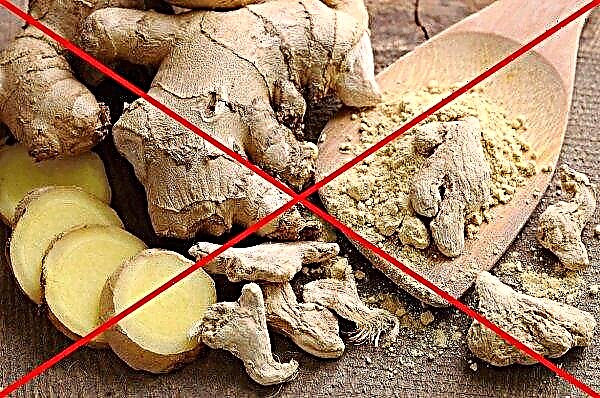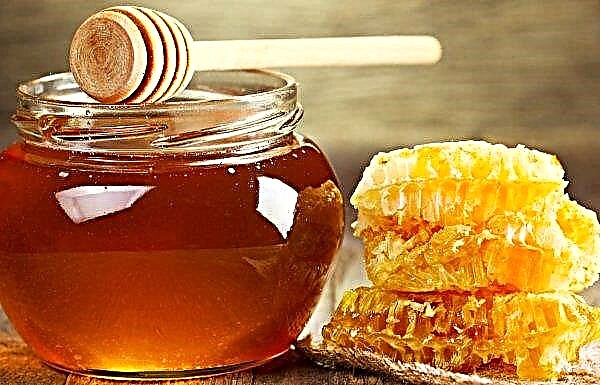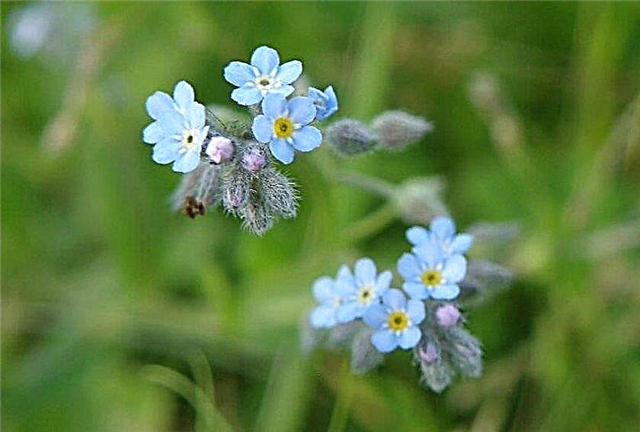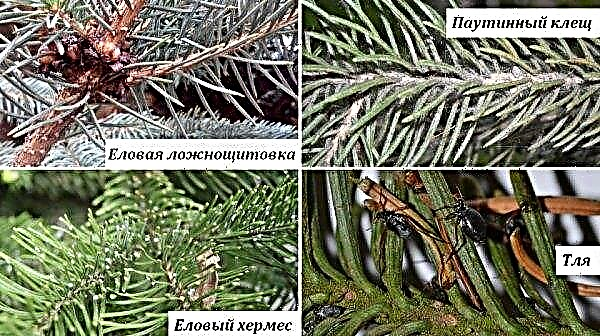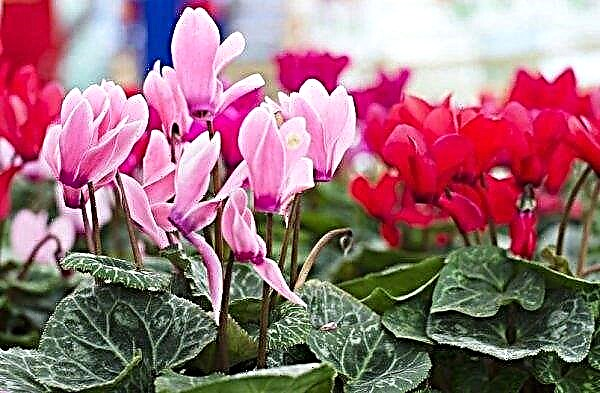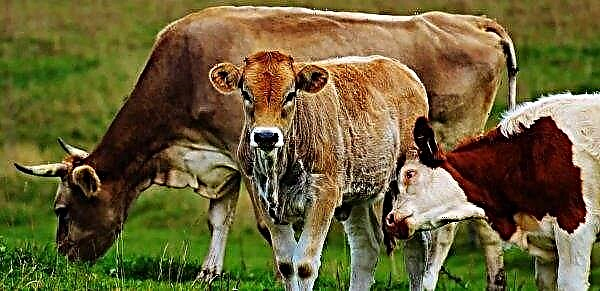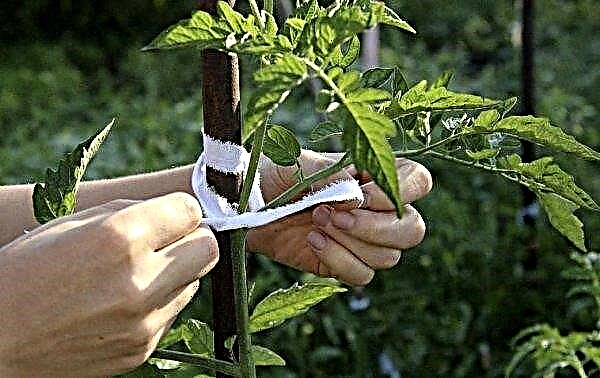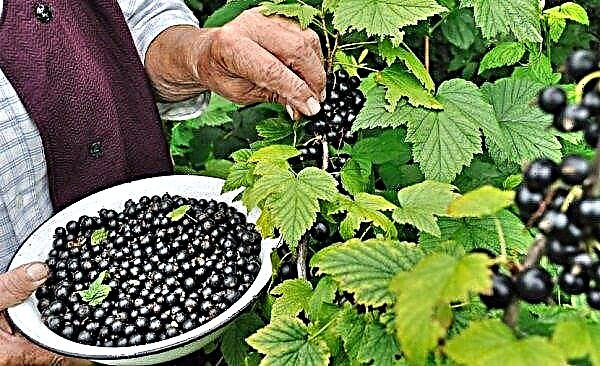There are about 75 species of juniper in the world. This is an evergreen coniferous plant, it can be found in the wild from the Northern Hemisphere to the subtropical mountain regions, it also grows well in urban conditions, garden areas. It is considered to be very refined and unpretentious in cultivation, so many amateur gardeners and designers often use it in landscape design. For these purposes, one of the most popular is the Cossack juniper Arcadia (Latin Juniperus sabina Arcadia). In this article, you can find information about the cultivation of this variety and the characteristics that it possesses.
Botanical Description
A brief description of the juniper Cossack Arkady:
- coniferous evergreen shrub, creeping, dwarf species, in height can reach 60 cm, in diameter of 2 m or more. In a year it can give an increase in width of about 20 cm;
- krone - thick, pillow-shaped;
- shoots - thin, long, straight, reddish-brown;
- needles - beautiful, small, soft, scaly, light green in color;
- fruits (cone berries) - green with a thick blue-gray spraying, ripen in autumn, decorative;
- frost resistant;
- drought tolerant;
- grows in sunny places, but tolerates a small partial shade;
- prefers moderately dry soils with an acid or alkaline reaction;
- well tolerates and takes root in areas with high air pollution and in polluted places.
Landing
Due to the fact that this juniper variety is considered frost-resistant and unpretentious, it is well suited for cultivation as a decorative ornament. Experienced gardeners are advised to plant juniper seedlings in spring (April, May) or in autumn (September, October). It is best to plant grown seedlings in containers with a closed root system, in which case the plant will quickly and painlessly take root in a new place.
Did you know? It is believed that nJuniper lumps are actually his bumps.
Shrub planting procedure:
- You need to choose a spacious, bright place. Dig the ground, remove all weeds along with the roots.
- The soil should be well-drained, with moderate humidity, and with a groundwater table not exceeding 1.5 m from the surface of the ridge, since when the water stagnates, the roots of the bush rot.
- At the prepared site, dig a hole with a depth of 70–80 cm, with a diameter of 50–60 cm. If several bushes are planted, the distance between the holes should be about 1 m.
- At the bottom of the landing pit, it is necessary to make drainage from rubble, expanded clay, broken brick, sand, a layer thickness of about 20 cm.
- Mix soil with peat (15–20 kg), add dolomite flour 200 g or lime 100 g, pour into a hole.
- Lower the sapling along with an earthen lump (the root neck should be about 5 cm above the ground), cover it with dug up earth, lightly tamp, pour plenty of water (15–20 l). After the liquid is absorbed, cover the periostemal circle with mulch (straw, dry mowed grass, sawdust, small bark).
- If a seedling with an open root system (OTC), then before planting it, it is necessary to cut off all the dry roots, soak the plant for a day in a solution of sodium humate (a natural substance, extract from manure, silt, peat). Lower the shrub vertically into the pit, spread the roots, sprinkle with earth, lightly tamp, water (15–20 l), mulch the trunk circle.
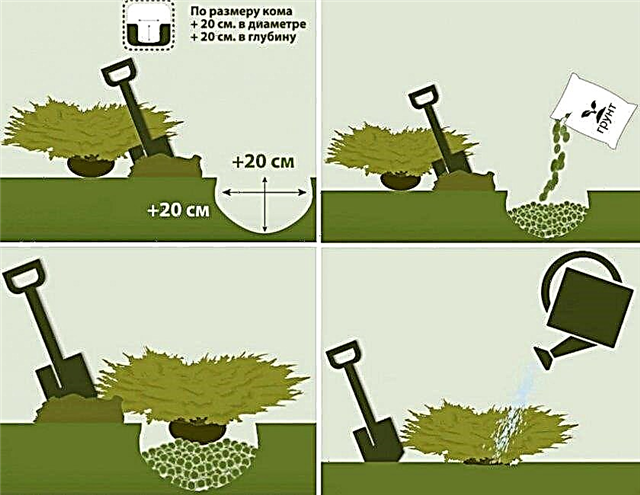
Juniper Care
In order to grow a beautiful juniper bush of the Cossack Arcadia, it is necessary to carry out a number of such care measures:
- Watering: in the dry season it must be watered 1-2 times a week, it is advisable to carry out this action in the evening, pour water under the root of the plant, in addition, juniper can be sprayed (sprinkled). If the soil under the bush was not covered with mulch, then after the liquid is absorbed, it must be loosened. After all, a crust may form on it, which prevents the evaporation of excess moisture.
- Top dressing - carried out in April. Under a bush, by dispersion, add nitroammophoska (30–40 g per 1 m²), dig up the soil after top dressing, pour it well with water or pour Kemira-Lux solution (20 g per 10 liters of water).
- Weed weeding - needed so that the bush can develop correctly, they must be removed along with the roots.
- Sanitary pruning - it is carried out in the spring or in the autumn, dry, damaged branches need to be cut, the cutting places can be covered with garden var. Forming pruning is done to give a decorative shape, shoots can be shortened by no more than 2 cm.
- Protection against pests and diseases. This variety is considered quite resistant to various diseases and pests, but it is better to periodically conduct preventive spraying with fungicides "Fundazol", "Horus", "Champion", etc.
Video: how to properly care for juniper
Transplanting an adult bush
Transplanting an adult bush is a rather difficult event, because it requires long preparation:
- A few months (5-6) before the transplant, dig a rather deep ditch around the juniper to cut long roots, the specified time will be enough to form a new root system.
- Six months later, carefully dig up the bush, remove it with an earthen lump, transfer to a cloth, move to a previously prepared hole (the scheme for preparing the hole, described above in the article). If a long tree transportation is required for transplanting a dug tree, then its roots need to be wrapped with cellophane, and the crown should be carefully tied so that the branches do not break, and it is well fixed.
 Before digging a shrub, it is necessary to mark the branches in which directions of the world they grew and to plant it in a new place in the same direction.
Before digging a shrub, it is necessary to mark the branches in which directions of the world they grew and to plant it in a new place in the same direction.
Breeding methods
There are several ways of propagation of the juniper Cossack Arcadius:
- Cuttings - This method is best started in the spring in April-May. It is better to cut off an adult plant (7–10 years old), along with a “heel” (part of old wood), annual branches 10–12 cm long. Remove about 3-4 cm from the needles from the bottom, put them in the solution for 30–40 minutes any growth stimulant. Pour fertile soil with peat and sand in a ratio of 2: 1: 1 into the container, make holes in it, plant prepared cuttings, pour, cover with a film, from time to time they need to be opened, aired and irrigated with a spray gun. Keep the “greenhouse” at a temperature of +16 ... + 21 ° С. After 30–40 days, the root system should be formed, seedlings should be planted in separate containers and after 2 years they can be planted in open ground.

- Layering - This is a very simple way. In the spring, when the vegetative period of the shrub begins, take away young strong branches, pin them to the ground with wooden studs or staples, sprinkle with soil, from time to time it is necessary to water, remove weeds. In autumn, young shoots can be separated and planted in a permanent place or in a greenhouse for better development of the root system.

Use in landscape design
Juniper Cossack Arcadia is considered a decorative species, so many designers use it in single or group plantings for landscape and landscaping purposes. Planted on lawns, in parks, squares, decorate them with stony hills, rockeries, terraces, as a green fence. Looks good with other coniferous, deciduous bushes and trees, in compositions with flowers and perennial grasses.
This juniper variety has received good reviews from many gardeners, because with proper care, with very little effort, time, it will become a worthy decoration for many years.



